Step by Step Guide on Growing Turmeric?

The products of crops which are used as food adjuncts to add flavor and aroma are spices. But spices used as food adjuncts to add taste are condiments.
Spices like turmeric are used as paste, liquid, and grind forms to improve texture, flavor, color and to increase shelf-life.
Introduction:
Turmeric is a herbaceous perennial spice crop native of tropical South East Asia which are close to ginger. This species bear large green leaves which can grows 3 or more feet tall. The rhizome of turmeric contains a pigment called Curcumin which is widely used for coloring in the food industry.
Scientific name: Curcuma longa
How to grow?
This species belonging to zingiberaceae (Ginger) family bears long, broad, lanceolate, and bright green leaves. The flowers are pale yellow and borne on dense spikes. This species with excellent medicinal properties have attracted cultivators and pharmacists or Ayurveda all over the world too.
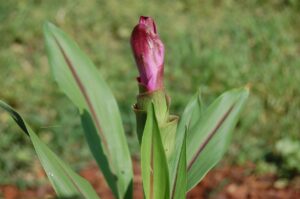

1. Cultivars:
a) Co-1: This cultivar has a big, bright orange rhizome. It is a long-duration variety suitable mostly for drought and saline soils.
b) Roma: It is medium duration variety that is comparatively less susceptible to diseases than other varieties.
c) Ranga: Rhizomes are bold, spindle-shaped, and orange-yellow.
Note: Take seeds with >12% moisture content and >95% physical purity. Use cultivars depending on the cuisine you prefer.
2. Soil:
a) Turmeric can be grown in diverse soil conditions from red soil to clay loam, alluvial loam, and well-drained soils.However, it thrives best in well-drained sandy or clay loam soils.
b) While talking about pH; acidic to slightly alkaline soil (5.8 to 7.8) is best for its cultivation.
c) Be aware on water stagnation as it is lethal for turmeric as it causes root destruction.
d) Use 100% well-decomposed compost fertilizers only.
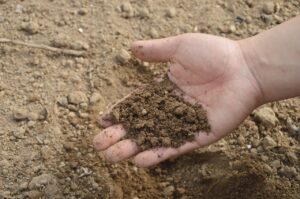
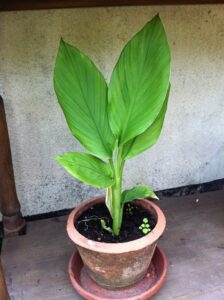
3. Climate and environment:
– Turmeric can be grown in diverse tropical conditions from sea level to 1600 meters above sea level.
– It requires a warm and humid climate, and can tolerate dry weather conditions but also could be successfully cultivated in partial shade.
– It thrives well at a temperature range of 20-30 degrees Celsius.
– This species is found doing best in rainfed conditions. Thus, well-distributed rainfall of 1500mm is preferred for its cultivation.
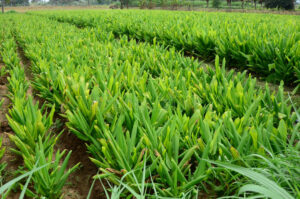

4. Field preparation:
– The land should be thoroughly plowed (4-6 times) to bring the soil to a fine tilth.
– Proper size raised or flatbeds are prepared preferably of 1-meter width and convenient length with a spacing of 30cm between the beds for drainage channels.
– In the case of the irrigated crops, ridges and furrows are prepared and the rhizomes are planted in shallow pits on the top of ridges.
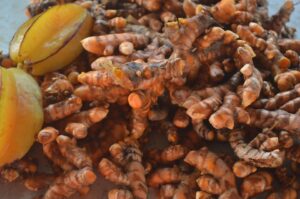

5. Manure and fertilizers:
– Apply 25-30 tons of well-decomposed FYM or organic manure at the time of final land preparation.
– Inorganic fertilizers 125kg Nitrogen, 6okg Phosphorus and Potassium are recommended.


6. Sowing time:
– Turmeric is planted with the receipt of pre-monsoon showers.
– In general, March-April is the optimum time for planting.

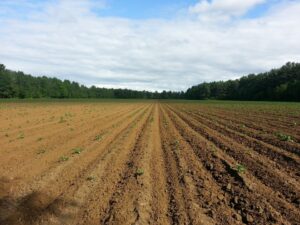
7. Irrigation:
– The beds should be kept moist until the onset of rain.
– Mulching is generally done to protect the crop from weed infestation and also to conserve soil moisture.

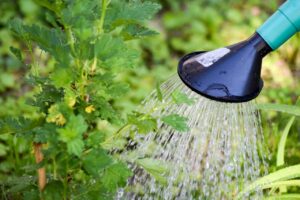
8. Inter-culture and weed control:
a) The first weeding operation should be done in 20-25 days after sowing.
b) The second weeding operation should be done in 50-60 days after sowing.
c) Apart from this, it is best to perform weeding operations whenever the density of weed emergence in the field is impeding the efficient growth of the main plant.
The lesser the weed, the healthier the plant as weeds tend to compete with the main plant in terms of space, fertilizers, and nutrient requirements.
Processing of turmeric:
1. Curing: Curing involves boiling fresh rhizomes in water and drying them in the sun. In the traditional method, the cleaned rhizome s are boiled in copper or galvanized iron for 45-60 minutes with water just enough to soak them.
2. Drying: The cooked fingers are dried in the sun by spreading in 5-7 cm thick layers on bamboo mats or drying floor. a thinner layer is not desirable as the color of the dried product may be adversely affected. During the night, the material should be heaped and covered which takes nearly 10-15 days to dry.
3. Polishing: Since dry turmeric has a poor appearance and rough coloration, the appearance should be improved by smoothening the outer surface by mechanical rubbing. The turmeric is also polished in power-operated drums.
4. Coloring: The color of turmeric always attracts buyers. In order to impart attractive yellow color, turmeric suspension in water is added to the polishing drum in the last 10 minutes. Afterward, the rhizomes should be dried in the sun.


Storage of seed rhizomes:
– The seed rhizome selected should be free from insect pests and diseases.
– The seed material is harvested in dry weather and stored in a pit of 1 meter deep and 0.5 meters wide in size. The seed rhizomes should be dried in shade before storing.
Major diseases and Control:
1. Name: Leaf spot (Taphrina maculans)
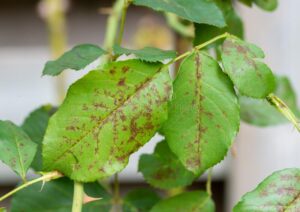

Symptoms: Spots appear in great numbers covering both sides of the leaves. The attacked leaves appear reddish-brown. In severe attacks, the spots are larger, irregular in shape, and coalesced.
Control: Use of healthy planting materials, spray 1% Bordeaux mixture or Dithane M-45 at the interval of 10 days, field sanitation.
2. Name: Rhizome and root rot
Symptoms: Show gradual drying along the margins. The basal portion of the soot appears watery soft. The root system is reduced and its tissues are also affected. In the advanced stage, the infection spreads to rhizomes which decompose and turn into a decaying mass of tissues.
Control: Drench the soil with 0.1% Cerasan, avoid waterlogging and uproot diseased plants as soon as noticed in the field.
Major insects control:
Name: Leaf Beetle


Symptoms: Complete defoliation.
Control: Spray white oil (Agro Spray) @ 2-5 ml/l of water as soon as the insect is observed in the field.
Benefits of cultivation:


– Highly used for coloring in the food industry
– Highly anti-bacterial
– The best raw material for making industrial dyes
– Helpful for manufacturing value-added products like oil, oleoresin, curcuminoids, and turmeric powder.
– Also best for commercial production
– Best for urban gardening in shady terraces with well-drained soils as well.
– Useful for healing coughs.
How do you feel about the article? Don’t forget to like and comment on this article and if you feel its really worthy share it with others too. We will be back soon with more informative articles till then Happy reading!

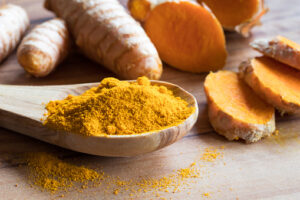

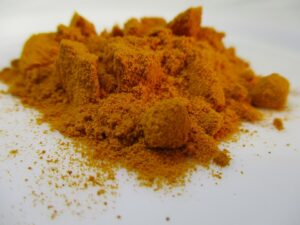
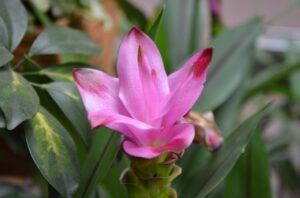


excellent info on moringa plants, where can I purchase seeds to plant it?
The best place is amazon at your location. Try checking some agro stores around you. Let us know for more questions.
A very interesting article. I thought they were part of pilea peperomioids. These nasturtium grow like weeds where I live in southern part of South Africa. The only problems are snails. They are hardy and face drought conditions well. We don’t get frost. I love them xx
Thank you for your comment. I really appreciate it. Please be with us and help us share with your friends and family.
You are so right about choosing well drained soil for planting the grapes. It worked great when we tried.
Thank you for your comment. We appreciate it.